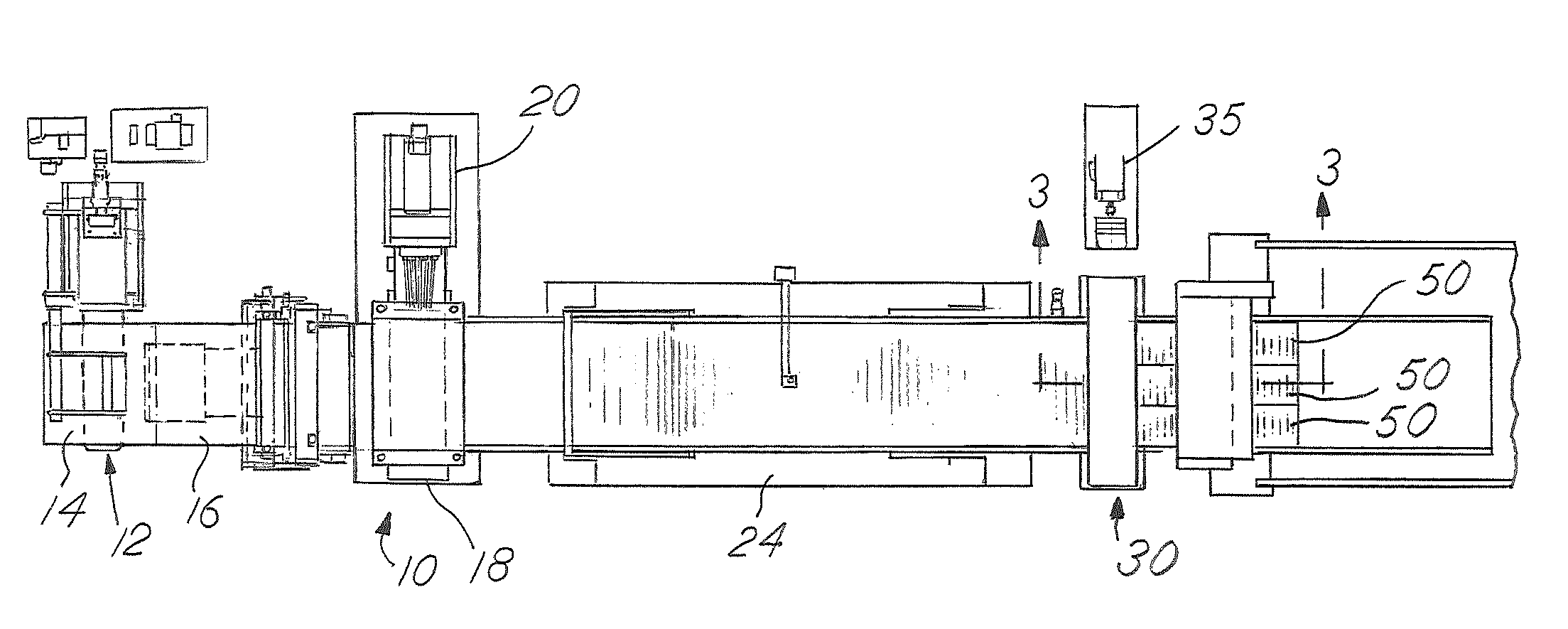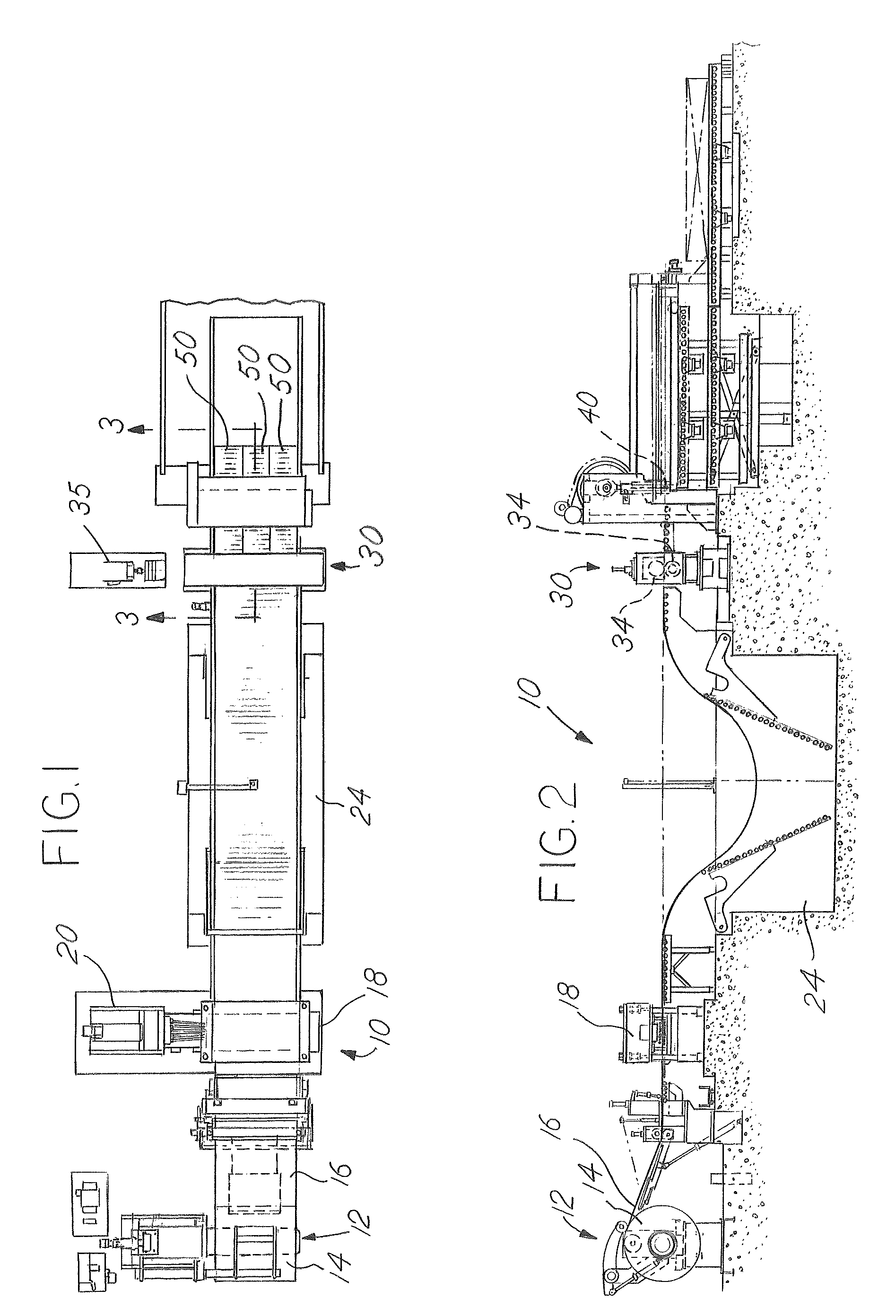Blanking line using slitter as feeder
a technology of slitter and feeder, which is applied in the direction of metal working apparatus, wire straightening device, manufacturing tools, etc., can solve the problems of single line that is difficult to adjust, difficult to maintain tight control over the dimensions, and cumbersome process of producing blanks from a single coil of metal
- Summary
- Abstract
- Description
- Claims
- Application Information
AI Technical Summary
Benefits of technology
Problems solved by technology
Method used
Image
Examples
Embodiment Construction
[0011]FIG. 1 shows an overview of the blanking line 10 invention from above. The beginning of the blanking line 10 includes an uncoiler 12 that holds a coil 14 of metal 16. The metal 16 is pulled from the coil 14 with a first feeder, which in this case, is a leveler 18. The leveler contains a drive motor 20 that rotates rollers within the leveler 18 to advance the material through the leveler 18 from left to right. Levelers are well known in the art and the inner workings of the leveler 18 are not described. The leveler 18 ensures that the metal 16 is of uniform thickness across its width. Although it is not absolutely necessary that the first feeder be a leveler 18 for leveling the metal 16, tolerances on the final blanks cut from a blanking line where the material is of uniform thickness will be tighter. The leveler 18 feeds material at a constant rate.
[0012]The metal 16 leaves the leveler and hangs in a looping pit 24. Unlike prior art blanking lines, the metal 16 is not slit as ...
PUM
| Property | Measurement | Unit |
|---|---|---|
| Length | aaaaa | aaaaa |
| Feed rate | aaaaa | aaaaa |
| Distance | aaaaa | aaaaa |
Abstract
Description
Claims
Application Information
 Login to View More
Login to View More - R&D
- Intellectual Property
- Life Sciences
- Materials
- Tech Scout
- Unparalleled Data Quality
- Higher Quality Content
- 60% Fewer Hallucinations
Browse by: Latest US Patents, China's latest patents, Technical Efficacy Thesaurus, Application Domain, Technology Topic, Popular Technical Reports.
© 2025 PatSnap. All rights reserved.Legal|Privacy policy|Modern Slavery Act Transparency Statement|Sitemap|About US| Contact US: help@patsnap.com



